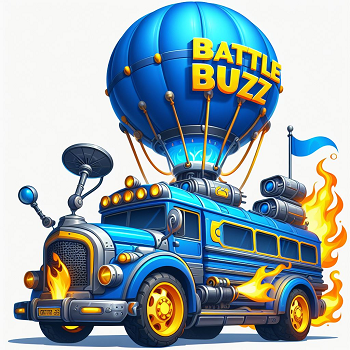In a significant announcement, Microsoft unveiled its innovative generative AI model, dubbed “Muse,” which promises to transform the landscape of game development. This ambitious initiative aims to empower developers by facilitating the creation of game visuals and controller actions from just a handful of human-made reference frames. Positioned as a “groundbreaking” advancement, Muse harnesses the power of AI to offer new levels of creativity and productivity within the gaming industry.
Microsoft’s initial demonstrations utilized content from Ninja Theory’s dynamic arena game, Bleeding Edge, to showcase Muse’s capabilities. While the potential of AI in gaming is vast, this early stage of development reveals a mixture of promise and limitation. The visuals generated by Muse are striking but also exhibit clear discrepancies, with animations that often appear hazy and undefined—a reminder that we may still be years away from achieving truly coherent AI-generated gameplay.
Muse’s capability to conceptualize a game environment by building upon ten frames of existing gameplay data could revolutionize the way developers prototype and iterate on ideas. The prospect of utilizing generative AI to expedite the brainstorming and design phases is immensely appealing, particularly in an industry where time and resources can be constrained. Developers could leverage Muse to explore a vast array of possibilities, generating quick iterations that allow them to identify the most engaging concepts before committing to full-scale production.
Moreover, the potential application of Muse to breathe new life into classic games is particularly intriguing. Microsoft asserts that this technology could democratize access to beloved titles that are currently locked away due to hardware limitations. The idea of resurrecting games that have been rendered obsolete by technological advancements is certainly enticing; however, it raises vital questions about authenticity and preservation within the medium.
Despite the excitement surrounding Muse, several critical concerns linger regarding the extent to which generative AI can genuinely enhance game development. While Microsoft’s vision is commendable, it must grapple with the fundamental challenge of how to preserve the unique characteristics that define classic games. Emulation has long been a reliable method of maintaining original gaming experiences, allowing players to enjoy timeless favorites without compromising their artistic integrity. By relying too heavily on generative AI, there exists the risk that the distinctive essence of these games could be lost in translation.
Another key concern is the current state of Muse itself. Close examinations of the early visuals produced by the AI reveal inconsistencies that could detract from the player’s experience. Characters, environments, and motions appear disjointed, contributing to a sense of surrealism rather than immersive gameplay. As Microsoft recognizes, the creative potential of Muse is still unfolding, and there is a considerable distance to traverse before the technology can reliably produce polished, coherent content suitable for commercial release.
Microsoft has chosen to adopt a measured approach in integrating generative AI into game development. By allowing teams to pace their adoption of Muse, the company demonstrates an awareness of the need for thorough exploration and refinement of this technology. Moreover, the proposition of involving both players and creators in the co-creation of AI features speaks to a collaborative philosophy that could yield positive outcomes.
However, the promises of “new value” must be substantiated with tangible benefits for the gaming community. If Microsoft is to convince stakeholders that generative AI can augment the development process meaningfully, it must focus on practical applications that resolve existing challenges. Unquestionably, innovation without purpose may prompt skepticism within the gaming community, which has grown increasingly wary of untested technologies touted as revolutionary.
Microsoft’s Muse AI represents an extraordinary leap into a new domain of game development, but it is clear that there is a long journey ahead. As Microsoft continues to refine its generative AI technology, it will be essential to consider the balance between innovation and preservation. Understanding the needs of developers, as well as the desires of the gaming public, will be crucial in navigating this evolving landscape. As we look ahead, the potential of Muse to reshape the gaming industry is undeniable, but its successful integration will ultimately depend on the thoughtful implementation of AI in a manner that enriches both creative expression and player experience.


Leave a Reply